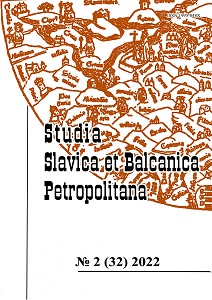Конфессиональные аспекты архитектуры деревянных протестантских костелов Восточной Европы XVII–XVIII веков
Confessional aspects of the architecture of wooden protestant churches in Eastern Europe in the 17th–18th centuries
Author(s): Evgeny Valentinovich KhodakovskySubject(s): Christian Theology and Religion, Architecture, History of Church(es), 17th Century, 18th Century, Identity of Collectives, History of Art
Published by: Издательство Исторического факультета СПбГУ
Keywords: architecture; art; wooden architecture; Eastern Europe; churches; identity;
Summary/Abstract: The article deals with the unique phenomenon of Protestant churches of the Peace, as well as «articular churches» of the middle of the 17th–18th centuries, built after the end of the Thirty Years’ War (1648) and the Sopron Seim (1681) in the Slavic lands of the Holy Roman Empire. Relative religious tolerance, on the one hand, and the harsh conditions in which the Protestant communities were placed among the Catholic majority, dictated the special specifics of the architecture of the wooden Protestant churches of the 1650–1770s in Swidnica, Jawor, Kežmarok, Hronsek, Leštiny, Istebne, Svätý Kríž. The main result of the study is the conclusion that the fundamental difference between «churches of the world» and «particular churches» from Catholic wooden churches lies not only in the cross-planned solution dictated by the well-known differences in the order of worship, but also in the very technique of wooden construction, which is unusual for the local East Slavic tradition. and more characteristic of North German wooden architecture. As a result, «articular» churches became a prominent phenomenon in the colorful and diverse cultural landscape of Eastern Europe. Having largely broken with local building traditions, these outstanding buildings significantly enriched the panorama of monuments of Protestant architecture of the 17th–18th centuries, which became a noticeable alternative to Catholic and Greek Catholic wooden construction. At the same time, they served the purposes of self-identification, when ethnic Poles or Slovaks who professed Protestantism and were in a minority, in every possible way through a different «architectural language», expressed in German or Scandinavian building technologies, tried to present their temple as a grandiose wooden «Noah’s Ark», on which members of the community together make their voyage among the storms, anxieties and upheavals that filled the history of modern Europe.
Journal: Петербургские славянские и балканские исследования
- Issue Year: 2023
- Issue No: 1 (33)
- Page Range: 55-67
- Page Count: 13
- Language: Russian

